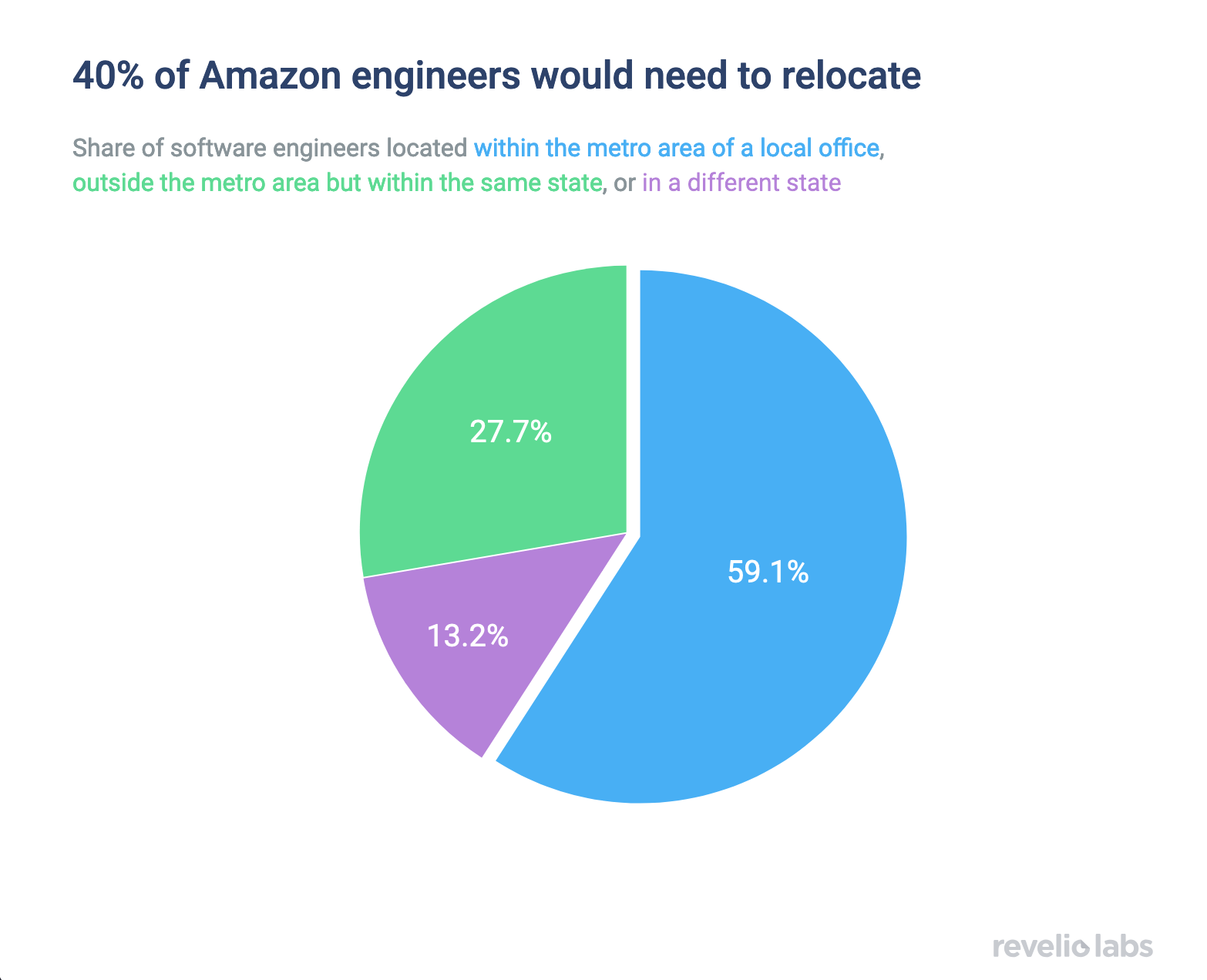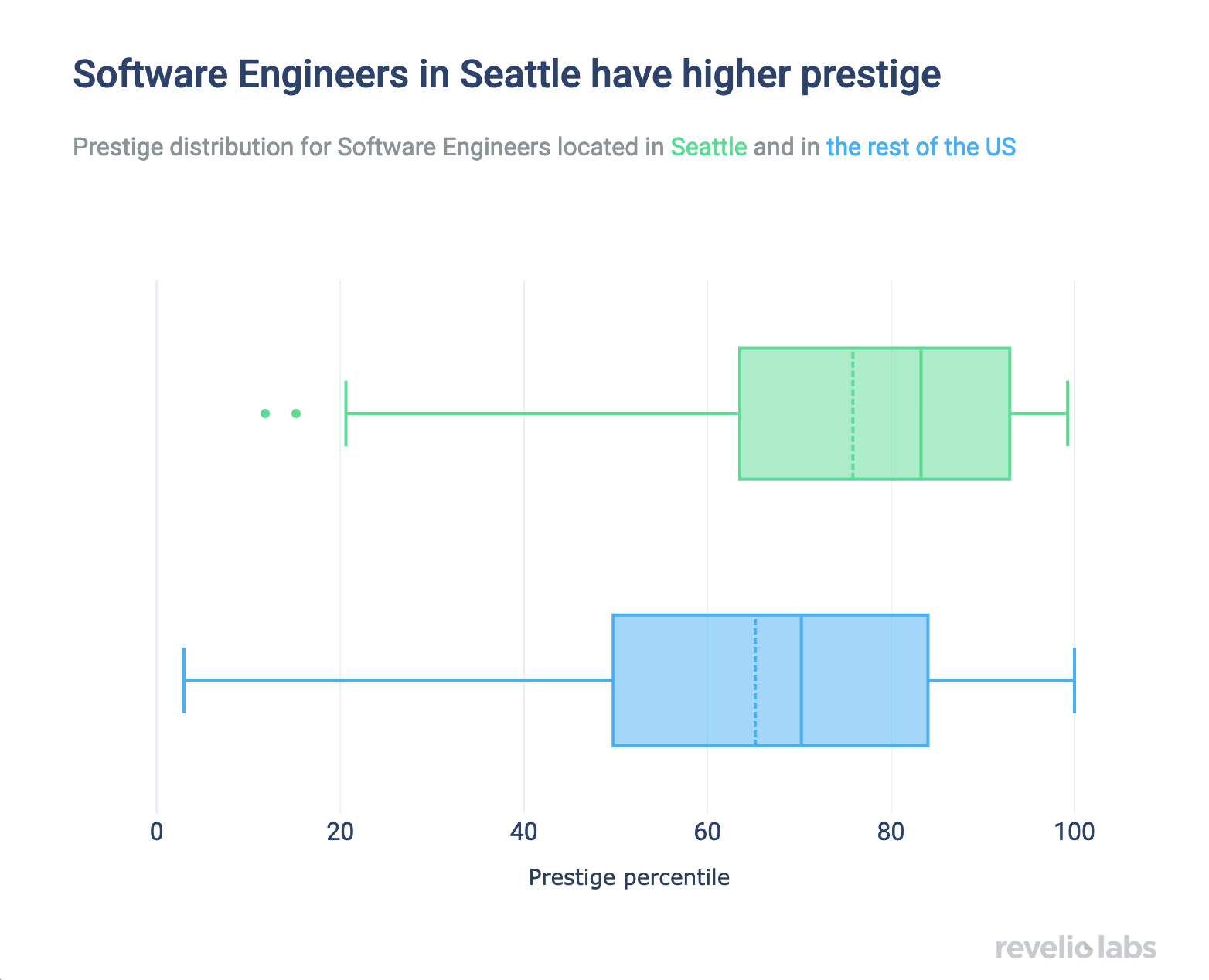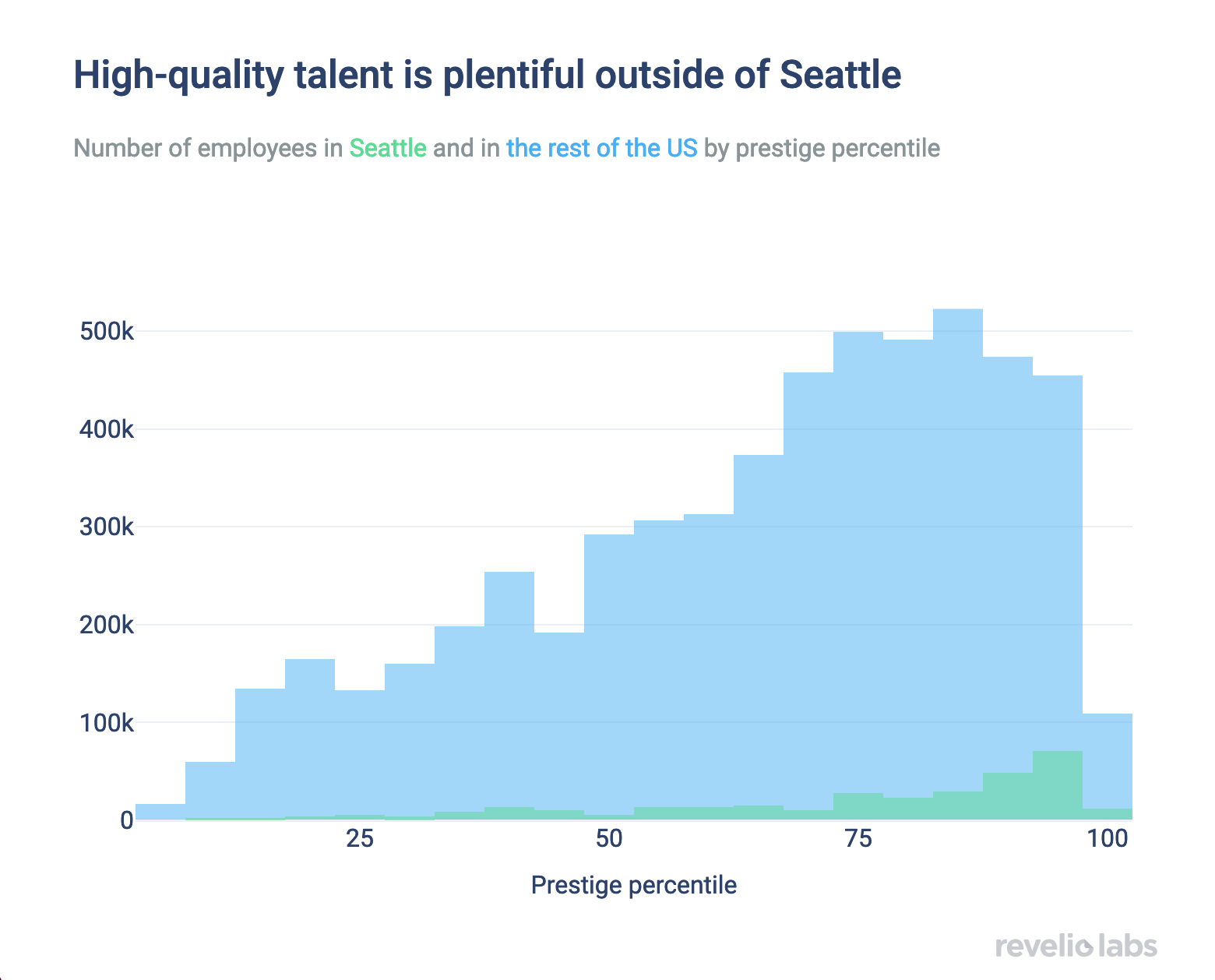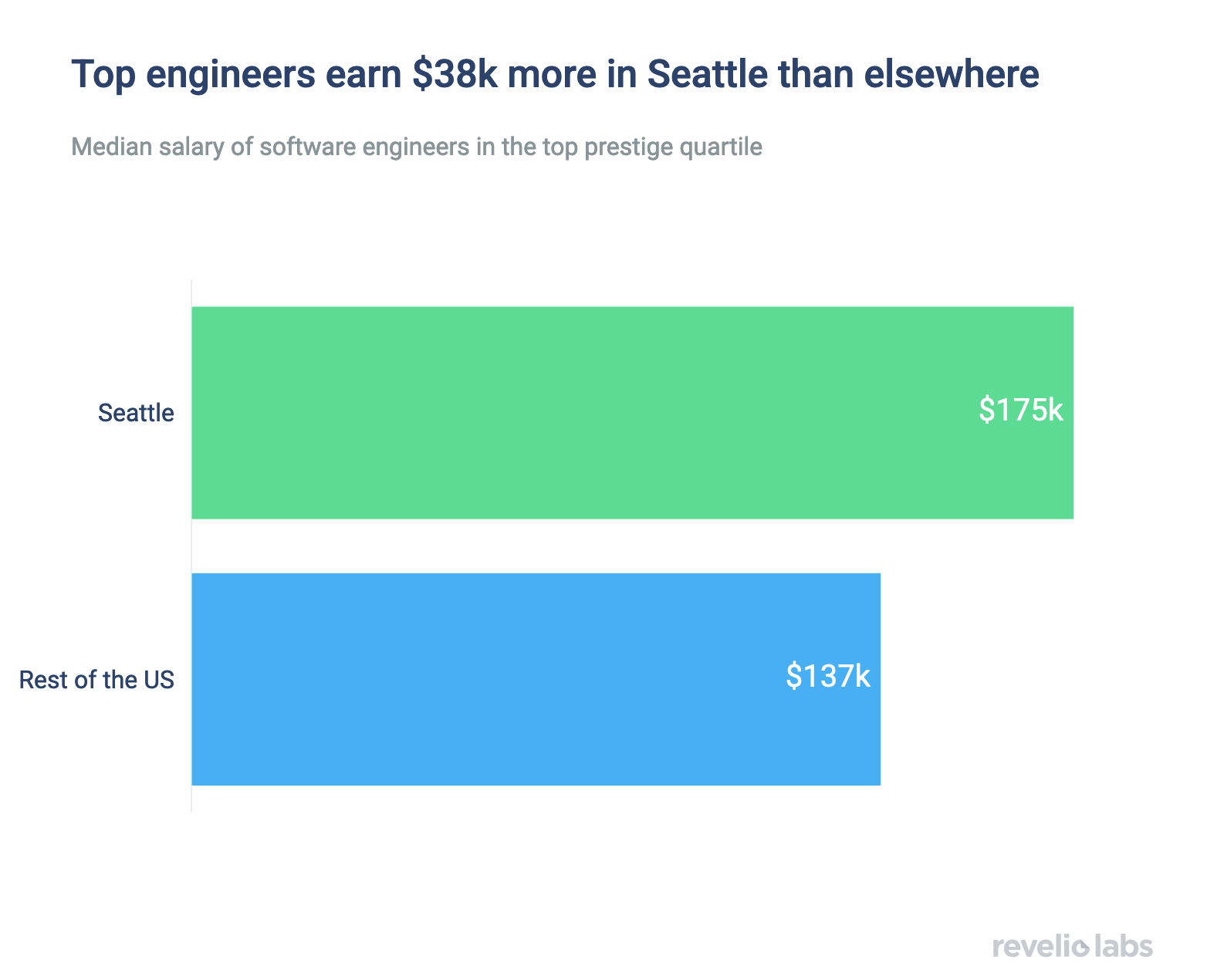Does Amazon Want Employees to Commute or Quit?
The costs of Amazon’s return-to-office policy

Strict return-to-office policies tend to be unpopular with employees. In Amazon’s case, our data suggests that 40% of their software engineers would have to relocate to be in proximity to an office.
RTO policies have costs for employers as well: While software engineers in tech hubs such as Seattle tend to have higher “prestige” scores, they are also more expensive to hire, with large wage premiums for those located in the city.
There is plenty of high-quality engineering talent available in the US outside of tech hubs. These professionals have the same prestige scores and skills but are paid much less given they live in lower-cost-of-living areas. Amazon’s labor costs may increase significantly if they limit their talent pool to Seattle.
Amazon recently announced a return to five days in-office for the majority of their workforce. This is a harder line on return-to-office (RTO) than other tech companies such as Google, Meta, and Microsoft, who have no more than three-day in-office policies. Despite AWS CEO Matt Garman saying that "9 out of 10 workers he had spoken with support the new policy," more than 500 Amazon employees signed a letter saying that they were "appalled," urging the company to reconsider its position.
Each company has to balance the benefits and costs of such a decision — in the case of Amazon, the latter might include a sizable fraction of employees quitting. Some live too far from the closest office to commute, while others would even have to move to a different city or state. Using Revelio Labs’ labor market data, we see that for software engineers working at Amazon, roughly half of them live outside a metro area with an Amazon office, and close to 25% even live in a state without an office. It is reasonable to assume that many of them won't be willing or able to relocate.


The company appears to be at ease with this consequence though, with Garman saying that "there are other companies around" for those unwilling to comply. However, losing current employees might not be the only cost that such a policy imposes. Relocation notwithstanding, by imposing RTO any company limits the scope of the talent it can reach, both in terms of quality and quantity. Using Revelio’s labor market data, we can quantify the cost of this tradeoff by focusing on the market for software engineers.
Sign up for our newsletter
Our weekly data driven newsletter provides in-depth analysis of workforce trends and news, delivered straight to your inbox!
There are multiple ways of trying to approximate a worker's "quality." In this analysis, we use our prestige scores, taking into account information on individuals’ past higher education institutions and companies, including their peers, seniority, and tenure.
Cities like Seattle have a disproportionate concentration of high-prestige talent. We find that the prestige distribution for software engineers in Seattle is significantly higher than the US national average. This shouldn't come as a surprise: Seattle is a major tech hub, host of the headquarters or key offices of major tech companies such as Amazon and Microsoft. The plot below highlights how Seattle software engineers have higher prestige compared to their peers in the rest of the country. Engineers in Seattle are 2.5 times more likely to hold a postgraduate degree compared to the rest of the country.


However, focusing only on the prestige distribution of software engineers in Seattle does not take into account the sheer quantity of available talent in the rest of the country. The plot below puts this into context, showing the counts of available software engineers at different levels of prestige. This highlights how many more high-prestige workers are available outside of Seattle: For every engineer in the top quartile of the prestige distribution in Seattle, there are at least 10 times as many in the rest of the country. Thus, employers who restrict themselves to a smaller labor market are severely limiting the talent pool from which they can draw high-quality candidates.


Of course, hiring high-quality workers comes at a price: High-prestige workers tend to earn much higher wages than low-prestige ones. Even so, there are still important salary differentials across locations, with Seattle in general having some of the highest-paid workers in the tech sector. The median pay of software engineers in Seattle is 30% higher than the median elsewhere in the US. Importantly, this difference remains even if we narrow our attention to only high-quality talent. The figure below shows the median salary for employees in the top quintile of the prestige distribution only. For this group of top engineers, the median salary is $38k higher in Seattle relative to the rest of the US.


Amazon and other companies might have good reasons to prefer a full return-to-office policy, which are likely to be related to their culture and business needs, such as fostering collaboration, innovation, and team cohesion. However, this decision will come at a cost, both in terms of talent lost and cost of future talent.


